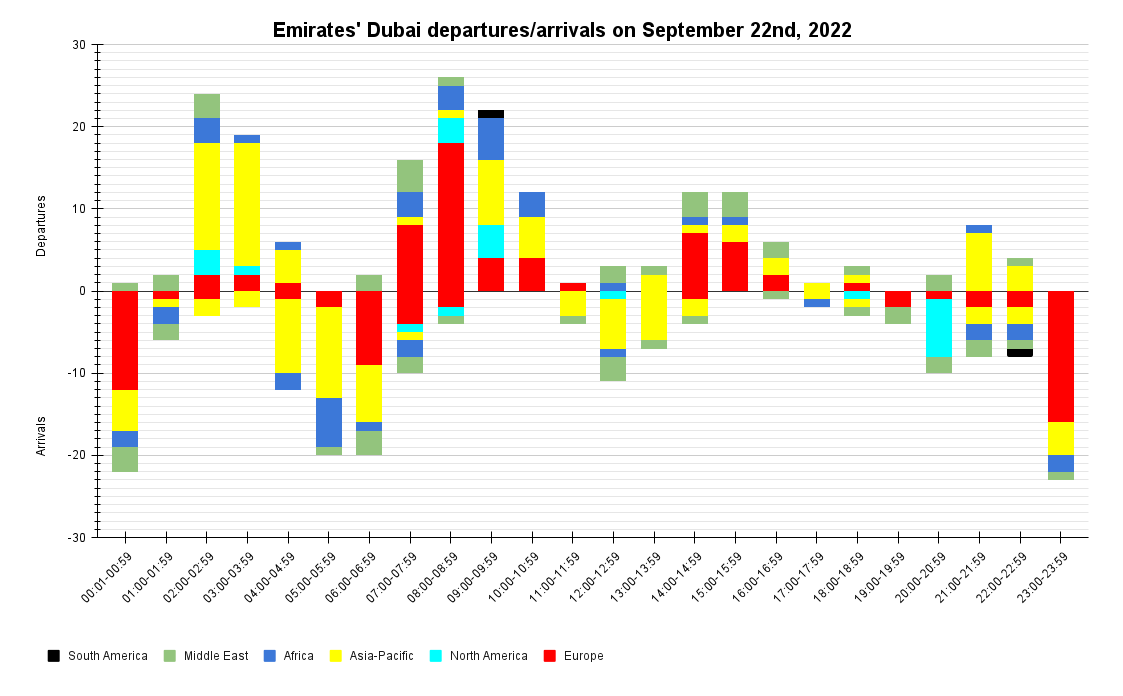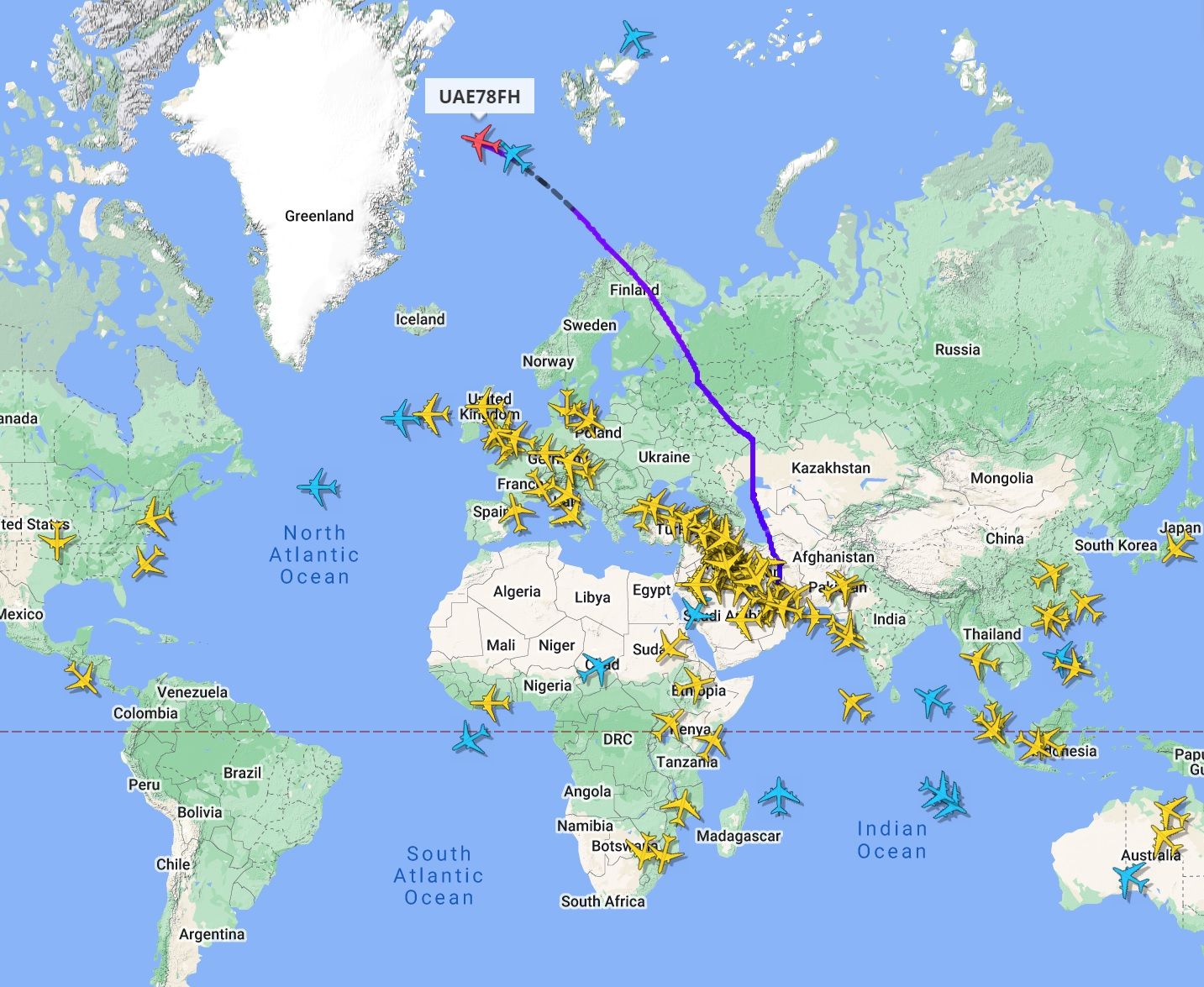I love hub-and-spoke operations. The sheer scale of flights, routes, and interconnectedness. The diversity of aircraft types for the different markets, the coordinated nature of schedules for connectivity often mean big periods of activity, and sometimes there are ultra-long haul services. Emirates is one example of the numerous hub-and-spoke airlines.
Emirates: 369 movements
I'm writing this article on September 22nd. On this day, Emirates has 369 movements by its passenger jets, for instance departures and arrivals combined. And that excludes its narrowbody partner, flydubai, which adds another layer of richness to flights, network breadth, and connectivity.
It shouldn't be surprising that Emirates revolves around Asia-Pacific and Europe. On this day, they have 243 of the 369 movements, some two-thirds, as shown below:
- Asia-Pacific: 131 movements
- Europe: 112
- Middle East: 56
- Africa: 46
- The Americas: 24
So there's no double counting, movements are based on nonstop flights only. While Emirates has various one-stop services, they're considered as one takeoff or landing rather than two. This minimally impacts geographic spread.
Stay aware: Sign up for my weekly new routes newsletter.
India is number one
On this day, not all of Emirates' passenger destinations are served. Still, 119 airports are connected to its Dubai hub across 67 countries. India is the leading nation by movements helped by a strong network and good frequency. It has flights to or from Ahmedabad, Bengaluru, Chennai, Delhi, Hyderabad, Kochi, Kolkata, Mumbai, and Trivandrum.
The UK is second and seven airports are served: Birmingham, Glasgow, London Gatwick, London Heathrow, London Stansted, Manchester, and Newcastle. The Northeast England city of Newcastle, which recently celebrated 15 years of Emirates service, was arrival-only on the 22nd.
Discover more aviation news.
How flights are coordinated
The following figure might look frightful, but it summarizes Emirates' Dubai departures and arrivals. It allows us to see how its flights are coordinated by number and geography. Many things are clear, including how Emirates' flights are now so omnidirectional. Gone are the days when they flew in from Asia and then left for Europe before repeating the process.
But Asia-Europe is still core. It's just that there's a huge mixture nowadays. It's driven by increased frequency, helped by loosened bilateral agreements, which means more choice, competitiveness, and market share, and probably also higher aircraft and staff productivity.
Four waves
Four 'waves' are visible, where a wave consists of one bank of arrivals and one bank of departures. Flights come in, passengers and freight are sorted, then they leave again. There are two primary waves and two much smaller ones. They are roughly as follows. Note that most waves have multiple geographic directionalities, but I've highlighted the key ones:
- Wave 1: 22:00-03:59; mainly from Europe, then departing to Asia-Pacific
- Wave 2: 04:00-10:59; mainly from Asia-Pacific/Africa, departing to Europe/North America, but also from Europe/Africa to Asia-Pacific
- Wave 3: 11:00-16:50; mainly from Asia-Pacific to Europe
- Wave 4: 18:00-22:50; mainly from North America to Asia-Pacific
Up to 30 movements an hour
This structure means that some hours have no departures or arrivals and very few movements, while others are chock-full. With just three movements, the quietest time is between 17:00 and 17:59. There's an arrival from Mumbai and Cairo and one flight to Manila. In contrast, the busiest period is 08:00-08:59, with 30 arrivals/departures.
Will you be flying to/from or through Dubai in the remainder of the year? If so, share your route in the comments.

.jpeg)
-A6-EGH.jpg)
-A6-EQE-(2)-(1).jpg)

